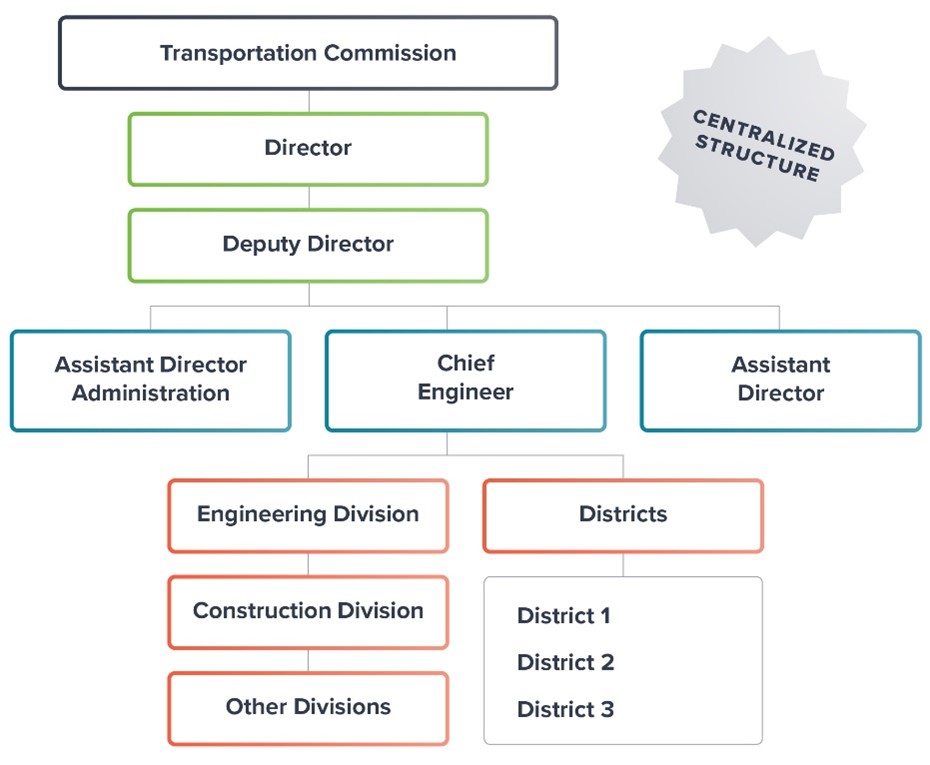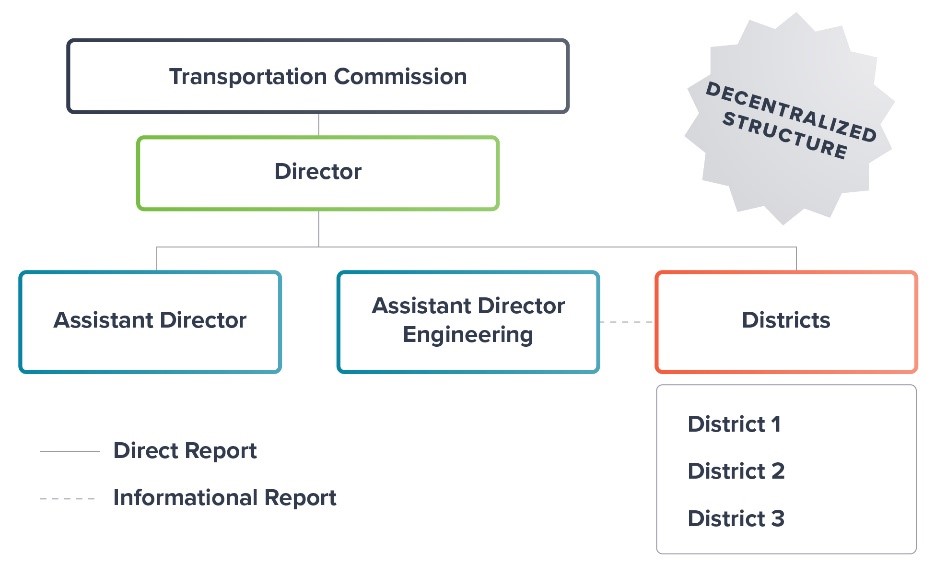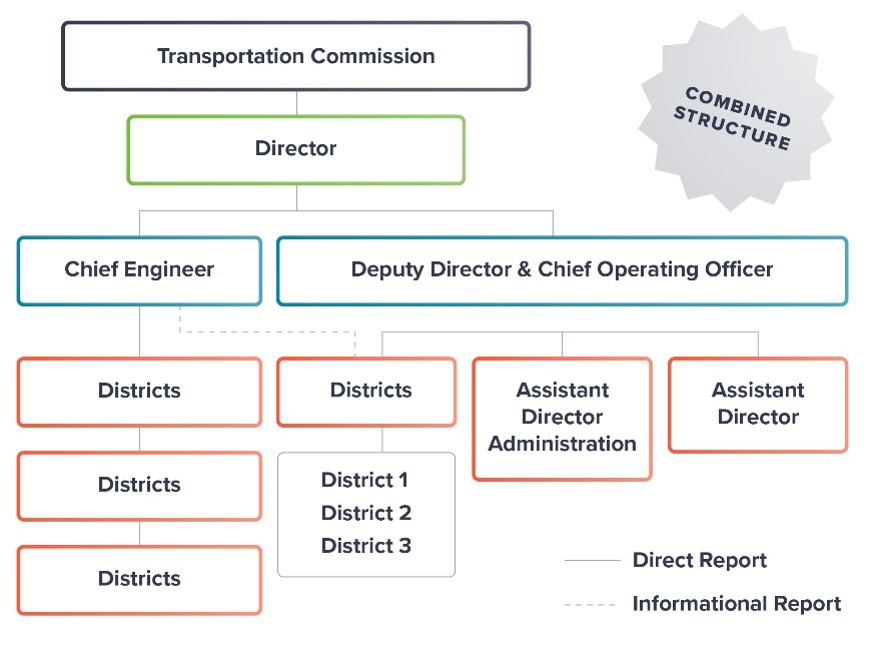Organizational Structures to Support Linking Pavement Design, Pavement Management, and Transportation Asset Management (TAM)
Developing a program of projects that allows agencies to achieve their performance objectives calls for a coordinated effort of planning, financing, engineering, and other project development and delivery practices. At large agencies such as Departments of Transportation (DOTs), these efforts may be performed in multiple offices and involve complex decision-making requirements and lines of authority. While DOTs all perform these functions, they are not all organized in the same way and they do not all share the same decision-making authority. How an agency is organized and how authority is distributed across that organization impacts how an agency might create links between pavement design, pavement management, and asset management. In general, agencies are organized into one of three typical DOT organizational control structures.
- At centralized agencies, the authority and responsibility for establishing objectives, allocating funding, and developing projects is held primarily by a central office or headquarters.
- In a decentralized control structure, the district offices have greater authority and autonomy.
- Most States operate under some type of combined or hybrid approach between centralized and decentralized (National Academies, 2018).
Centralized

Generic centralized control structure
(Modified from the National Academies, 2018).
At centralized agencies the authority and responsibility for establishing objectives, allocating funding, and developing projects is held primarily by a central office or headquarters. In this control structure, the district or regional offices are typically responsible for overseeing construction delivery, maintenance, and operations activities. A centralized control structure is most commonly found in States that are geographically small (e.g., New Jersey) or are less populated (e.g., South Dakota). The benefits of this approach is that it consolidates technical expertise in a single location and reduces redundant responsibilities. This structure also simplifies the process of ensuring agency-wide consistency related to project selection, project development, and project delivery decisions.The figure on the right shows a generic organizational structure for a centralized agency.
Decentralized

Generic Decentralized Control Structure.
(Modified from the National Academies, 2018)
In a decentralized control structure, shown in the figure on the left, the district offices have greater authority and autonomy. In this approach, statewide objectives are likely established by a headquarters office. The headquarters is also likely to allocate funding to the districts and manage the Statewide Transportation Improvement Program (STIP). However, unlike a centralized approach, decentralized agencies leave project identification, selection, programming, and delivery largely to the district offices. This approach is generally preferred by large States that have large populations such as Texas, California, and New York. The advantage of this approach is that the district offices are better able to address the specific needs of their geographic areas and populations
Hybrid

Generic hybrid control structure.
(Modified from the National Academies, 2018)
Most States operate under some type of combined or hybrid approach between centralized and decentralized, as shown in the figure to the right (National Academies, 2018). In a hybrid approach, some aspects of the agency's program are centralized while others are decentralized. An example of this approach is the Iowa DOT, in which Interstate projects are identified, programmed, and developed centrally but projects on other highway networks are entirely overseen by the district offices. In other agencies, some asset classes may be managed centrally and others in a decentralized manner. A hybrid approach allows the agency flexibility to deliver each program in the way that is best suited to the agency's needs.
REFERENCES
National Academies of Sciences, Engineering, and Medicine. 2018. Staffing for Alternative Contracting Methods. Washington, DC: The National Academies Press.

